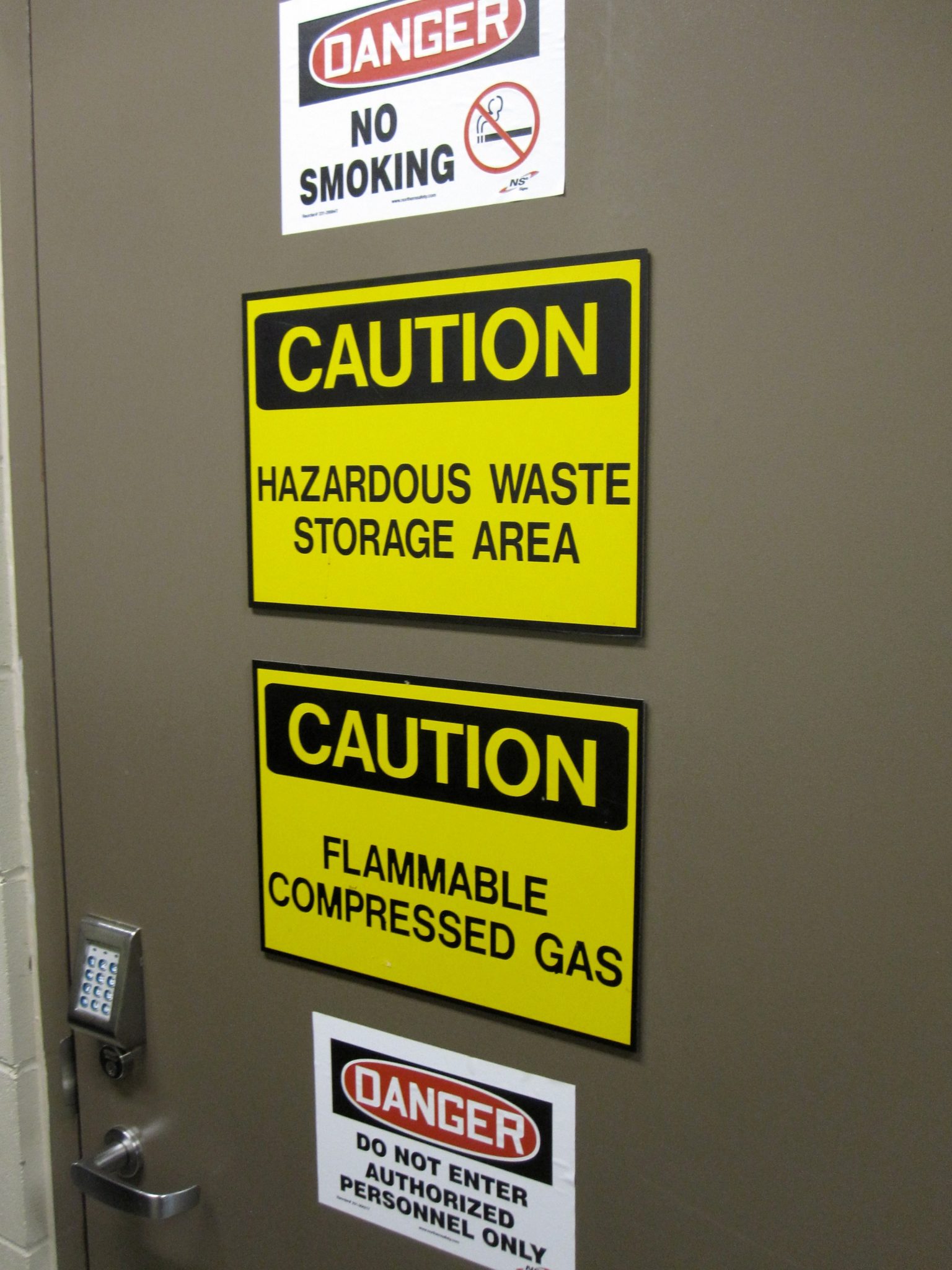
The design of a hazardous waste storage area is intended to ensure that, in the case of a spill, waste stays in the storage area. From the types of containers used to the waste itself, the Resource Conservation and Recovery Act (RCRA) dictates how waste should be stored. Keep reading to learn about important Maine hazardous waste storage requirements.
Hazardous Waste Storage Requirements
1. Condition of the Container: Hazardous waste storage containers must be in good condition to store waste. For example, the container cannot have any cracks, leaks, rust, etc. and must securely close. If waste is not stored in a container that meets these standards the risk of a spill or adverse reaction is likely, and can cause physical harm.
2. Compatibility of Waste: Containers used to store waste must be compatible with the waste being stored. Incompatible wastes cannot be commingled. For example, corrosive materials must be stored in poly drums, as opposed to steel drums, in order to prevent corrosion. It is also important to remember that hazardous wastes cannot be added to a receptacle that formerly contained an incompatible material, unless it has been thoroughly washed.
3. Containment: Secondary containment is used to prevent spills from leaking away from the storage area. The containment must meet a variety of specifications defined in 40 CFR § 267.195 . Such requirements include:
- Must have a capacity of 10% of the volume of all containers or 100% of the volume of the largest container, whichever is greater.
- The base of the containment must be sloped or designed in a way so that liquids captured during a spill can be drained into a hazardous waste container.
- The base must be free of cracks or gaps and must be impervious to contain any leaks or spills
4. Inspections: Inspections must be conducted on the storage area at minimum once a week. During this inspection, containers should be checked for leaks or deterioration. A written record must also be kept that includes the dates & time of the inspection, the name of the inspector, any observations made, and if repairs are needed. A listing of the repairs and when they occurred should also be recorded.
5. Container Closure: Hazardous wastes must be kept in closed containers at all times, unless waste is being added to the receptacle. It is important to note that many hazardous waste containers have specific closure instructions. To find closure instructions consult the container manufacturer.
6. Labeling & Marking: Labels on a hazardous waste container must include what the waste is (without any abbreviation), as well as the accumulation start date and an indication of the hazards associated with the waste. Best practice, however, says that waste should also include generator information including EPA ID number, address, and a shipping description.
It is important to remember that identifying and understanding a chemical and how it reacts is essential before adding it to a container and storing it. Checking labels, securely and properly closing drums, and consulting safety officers or professionals if you are in doubt of any chemical storage situation help to ensure protection.
Questions? Contact Maine Labpack
At Maine Labpack, we understand that federal regulations are often difficult to understand and follow. Our health and safety audits offer relief for facilities that need assistance in compliance and waste storage. Contact us today to learn more or to schedule an audit.
